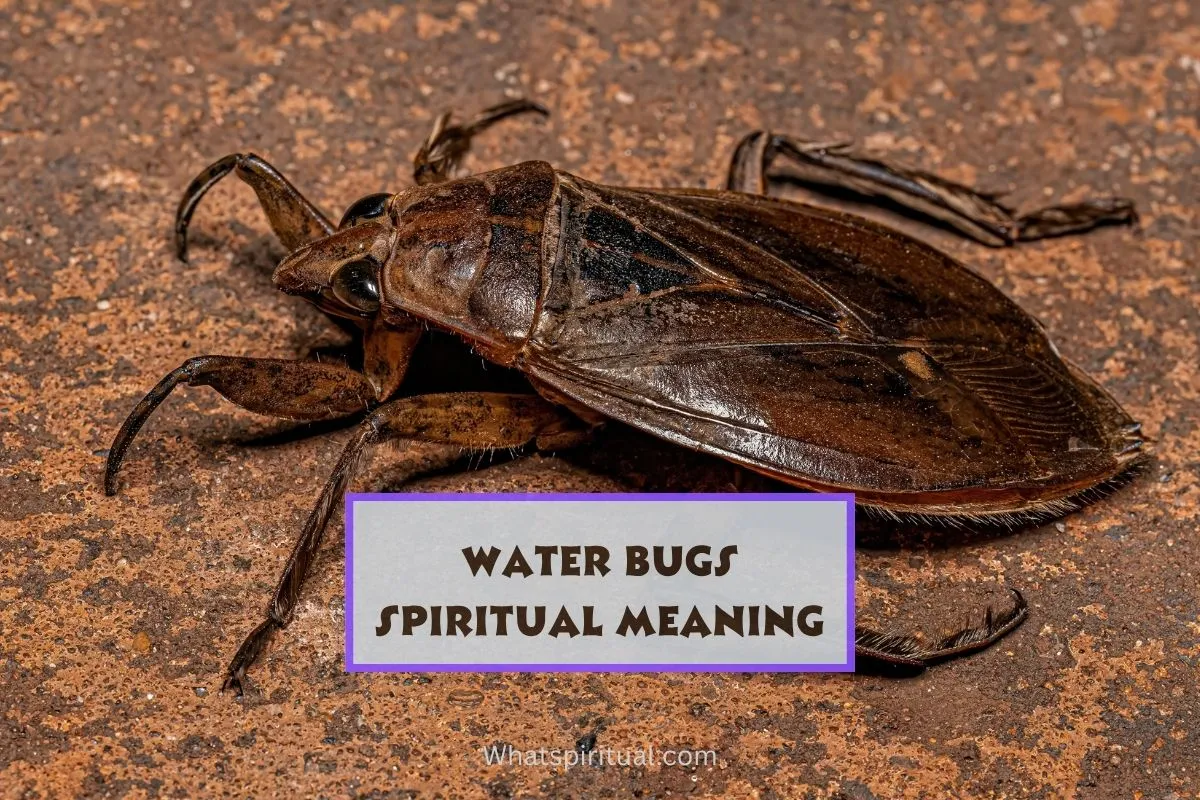The color green resonates with profound spiritual symbolism across various cultures and belief systems. Deeply rooted in nature, the green spiritual meaning represents growth, rebirth, health, and overall well-being, signifying the cycle of birth, death, and renewal. With its foundation in the colors blue and yellow, green embodies inner peace and spiritual awakening, radiating tranquility reminiscent of lush landscapes.
This blog delves into the intricate green color significance, unraveling its diverse representations as a symbol of fertility, fruitfulness, and the divine love for humanity. It explores the color green symbolism in religious contexts, color psychology insights, and the profound heart chakra connection, offering valuable perspectives on incorporating this rejuvenating hue into daily life for holistic well-being.

Key Takeaways
What is the Green Color?
At its most fundamental, green is a color that occupies a space on the visible spectrum, perceived by the human eye thanks to wavelengths of approximately 495–570 nm. It is a color that we often associate with nature and life.
From the verdant leaves of a forest canopy to the gentle hues of a grassy meadow at dawn, green is the backdrop of the natural world, a constant symbol of growth, renewal, and vitality. This omnipresence in nature makes green a unique color, one that is deeply embedded in our visual and psychological experiences of the world around us.
Yet, green is more than just a color we see. It is a complex amalgamation of blue’s tranquility and yellow’s energy, a midpoint that offers a balance between coolness and warmth.
This balance is why green often evokes feelings of calmness and serenity, yet with an underlying energy that inspires rejuvenation and creativity. In the realm of color psychology, green occupies a special place, serving as a bridge that connects our emotional responses to the physical world.
Furthermore, the significance of green extends beyond its physical and psychological impact. It is a color rich with symbolic meaning, carrying with it centuries of cultural and spiritual significance.
To truly understand the depth of green, one must explore its multifaceted roles across different contexts, from its representation in art and literature to its importance in religious and spiritual symbolism.
History and Origins
1) Ancient Origins
The origins of the green spiritual meaning can be traced back to ancient civilizations, where the color green held profound symbolism. In the Bible, green symbolized life, fertility, renewal, and resurrection. The name ‘green’ itself is derived from the Old English word ‘grene,’ referring to the color of living plants.
Green has been utilized in art since the time of the Ancient Egyptians, who employed green earth and malachite pigments. For the Egyptians, green was a symbol of rebirth and regeneration, and they used the copper mineral malachite to paint on tomb walls, although it was expensive and turned black over time.
2) Significance in Early Cultures
3) Historical Symbolism
| Time Period | Symbolism |
|---|---|
| Middle Ages | Green was worn by merchants, bankers, and the gentry, indicating social status and profession. The bride in the Arnolfini Portrait by Jan van Eyck wore a bright green dress, signifying her family’s wealth. |
| 18th Century | The toxic green pigment Scheele’s Green, made using the chemical arsenite, was widely used but caused illness and even death. A similar pigment called Paris Green also contained toxic substances. |
| Modern Times | Green is associated with environmentalism, sustainability, and eco-friendliness. However, many modern green pigments and dyes still contain harmful chemicals like chlorine and heavy metals. |
Despite its historical association with toxicity, green has maintained its symbolism of vitality, freshness, calmness, and renewal. As a combination of yellow’s optimism and blue’s calmness, green evokes feelings of revival and peace due to its connection to nature. Pantone even named ‘Greenery’ as the Color of the Year in 2017, solidifying green’s enduring significance.
What Does the Color Green Symbolize?
Green is a color rich in symbolism, often associated with a myriad of concepts and ideas that resonate deeply with the human psyche. At its core, green symbolizes life and renewal.
This association is almost intuitive, given green’s dominance in the natural world. It represents the rebirth that follows winter’s barrenness, the promise of new life as the earth rejuvenates itself with each passing season.
But the symbolism of green extends beyond just life and growth. It is also a color deeply connected to fertility and prosperity. In many cultures, green is seen as an auspicious color, embodying the hope for a fruitful harvest and the prosperity that it brings.
This link between green and abundance is not just limited to agricultural bounty but extends to wealth and success in a broader sense, making green a color that inspires optimism and forward-looking aspirations.
Moreover, green carries connotations of harmony and balance. Its position in the color spectrum, nestled between the calming blues and the energizing yellows, lends it a natural equilibrium.
This balance is reflective of green’s symbolic role in representing stability and endurance, qualities that are essential for growth and prosperity. In this way, green not only symbolizes the physical aspects of life and prosperity but also embodies the emotional and spiritual balance necessary for personal development and well-being.
Positive Spiritual Meanings of Green Color
1. Renewal and Growth
Green is closely associated with nature, health, and vitality, promoting feelings of renewal, growth, and optimism. Spiritually, this color represents new beginnings, growth, vibrant health, and renewal, making it a powerful symbol of positive transformation and personal development.
2. Positive Change and Discovery
Dreaming of the color green is generally seen as a positive sign, indicating new experiences, changes, or discoveries. This spiritual meaning of green encourages individuals to embrace positive changes in their lives and embark on journeys of self-discovery and personal growth.
3. Harmony and Balance
Green is associated with nature, peace, calm, harmony, and balance. In a spiritual context, this color signifies the ability to achieve inner equilibrium, fostering a sense of tranquility and emotional stability.
4. Nurturing Relationships
In relationships, green can represent harmony, unconditional love, mutual respect, forgiveness, compassion, trust, and devotion. This spiritual meaning of green encourages individuals to cultivate healthy, nurturing connections with others, built on a foundation of understanding and compassion.
5. Personal Growth and Compassion
People who identify with the color green tend to be focused on personal growth, connected to nature, creative, and compassionate. This spiritual meaning of green highlights the importance of personal development, creativity, and empathy towards others and the natural world.
6. Physical Health and Healing
A green aura is associated with physical health, the heart chakra, and healing professions. This spiritual meaning of green represents the connection between physical well-being, emotional balance, and the ability to heal and nurture others.
7. Connection to Nature
Green’s strong association with nature symbolizes the spiritual connection between humans and the natural world. This meaning encourages individuals to appreciate and respect the beauty and wisdom of nature, fostering a sense of harmony and balance within themselves and their surroundings.
Negative Spiritual Meanings of the Color Green
1. Envy and Jealousy
Green is often associated with feelings of envy and jealousy, representing a desire for what others possess. This negative spiritual meaning can manifest as resentment, bitterness, and a lack of contentment with one’s circumstances.
2. Greed and Materialism
The color green is linked to greed and an excessive desire for material wealth and possessions. This spiritual meaning can lead to a preoccupation with accumulating physical objects, potentially at the expense of personal growth and spiritual fulfillment.
3. Immaturity and Inexperience
In some contexts, green can symbolize immaturity, inexperience, and a lack of wisdom. This negative spiritual meaning may suggest a need for personal growth, learning, and the acquisition of knowledge to overcome naivety or ignorance.
4. Nausea and Sickness
For some individuals, the color green can evoke feelings of sickness and nausea. This negative spiritual meaning may be associated with physical or emotional discomfort, potentially stemming from unresolved issues or internal conflicts.
5. Selfishness and Lack of Empathy
Green is sometimes associated with selfishness and a lack of concern for others. This negative spiritual meaning can manifest as a disregard for the needs and feelings of those around us, leading to strained relationships and a lack of emotional connection.
6. Shame and Embarrassment
In certain contexts, the color green can represent feelings of shame or embarrassment. This negative spiritual meaning may arise from a sense of guilt, regret, or a perceived failure to meet societal or personal expectations.
7. Illness and Poor Health
Green is sometimes connected to illness, disease, and poor health. This negative spiritual meaning may symbolize physical or emotional imbalances that require attention and healing.
While green is often associated with positive spiritual meanings, it’s important to acknowledge and address these potential negative connotations to maintain balance and personal growth.
The Heart Chakra Connection with Color Green
1) The Heart Chakra and Green
The heart chakra, known as Anahata in Sanskrit, is the fourth chakra in the energy system and is associated with the color green. This chakra governs unconditional love, empathy, and emotional equilibrium. The green color is connected to nature, growth, renewal, and air, which corresponds to the heart chakra and our emotional well-being.
2) Significance of the Green Heart Chakra
3) Signs of Imbalance
Signs of a blocked or imbalanced green heart chakra include:
4) Balancing the Heart Chakra
Practices to balance and activate the heart chakra include:
A balanced and open heart chakra is vital for spiritual advancement, as it allows for deeper connection to the higher self, unconditional love, and inner peace.
Green Color Psychology and Personality
1) Green: The Color of Calmness and Renewal
Green is considered a ‘cool’ color that can have a calming and relaxing effect on the mind and body. It is linked to creativity, motivation, and success, and can improve focus and reading ability. Different shades of green carry distinct psychological associations:
2) Psychological Effects of Green
Green is considered a ‘cool’ color in color psychology, with shorter wavelengths that are more relaxing and calming. It can have a positive effect on thinking, relationships, and physical health, which is why it is often used in medical facilities to help relieve stress and aid healing.
| Psychological Effect | Description |
|---|---|
| Stress Reduction | Green is associated with nature, which is seen as relaxing and refreshing. Spending time in green environments or looking at green scenery can reduce stress, improve impulse control, and enhance focus. |
| Emotional Balance | Green can have both calming and motivating effects. It is associated with success, while red is associated with failure. Green can also inspire creativity. |
| Optimism and Positivity | Green is linked to optimism and positive emotions. It may function as a ‘good luck charm’ and increase feelings of hope. However, it can also represent envy and jealousy, with the phrase ‘green with envy’ reflecting this negative association. |
3) Green and Personality Types
The ‘green personality type’ is analytical, calm, and strategic, with a strong inclination towards leadership and a deep thirst for knowledge. Green evokes a sense of security and abundance, as it is associated with environments that satisfy basic needs. Individuals who identify with the color green tend to be focused on personal growth, connected to their environment, and creative and compassionate.
Green is a powerful color that represents financial growth, transparency, and prosperity in a business context. It can help a business appear more trustworthy, secure, and environmentally conscious. Green is a dominant color in nature that evokes feelings of growth, renewal, and life, and is associated with refreshment, peace, rest, and security.
While green encourages a balance in the brain that leads to decisiveness, it can also be perceived negatively when associated with materialism, envy, and possessiveness. Lighter greens that lean more towards yellow are associated with freshness, while darker greens are associated with stability and growth.
Different Shades of Green and Their Meanings
The color green encompasses a wide range of shades, each carrying its unique symbolism and emotional impact.
Light green, for example, is often associated with freshness, youth, and vitality, capturing the essence of spring and new beginnings. It is a color that inspires optimism and a sense of renewal, encouraging a fresh perspective on life.
Dark green, in contrast, conveys a sense of stability and endurance. It is a more subdued hue, evoking the deep, dense forests and the resilience of the natural world. Dark green is often associated with wealth, prestige, and tradition, reflecting a more conservative and grounded perspective.
Mint green, with its soft, calming quality, is associated with tranquility and mental clarity. It is a refreshing shade that promotes relaxation and emotional balance, making it an ideal choice for spaces designed to foster calmness and concentration.
Olive green, with its earthy tones, symbolizes peace and harmony. It is a color deeply connected to the natural world, representing a desire for unity with nature and a commitment to environmental conservation.
Each shade of green offers a unique lens through which to view the world, providing a rich palette of emotions and meanings that enrich our lives and deepen our understanding of the world around us.
Biblical Meanings of the Color Green
In the Christian tradition, the color green holds significant spiritual symbolism, often associated with growth, life, and resurrection. The Bible is replete with references to green, underscoring its importance in conveying spiritual truths.
One of the most evocative images is found in Psalm 23:2, where it states, “He makes me lie down in green pastures.” This verse symbolizes the provision and peace that God offers, painting a picture of rest and rejuvenation under His care. Green pastures are metaphors for spiritual nourishment and divine guidance, offering comfort and assurance to the faithful.
Another powerful reference is found in Jeremiah 17:8, which reads, “They will be like a tree planted by the water that sends out its roots by the stream. It does not fear when heat comes; its leaves are always green.”
This verse speaks to the resilience and faith of those who trust in the Lord, promising prosperity and protection. The imagery of the evergreen leaves symbolizes enduring faith and the ability to thrive despite challenges, reinforcing the message of hope and perseverance.
These biblical references to green underscore its spiritual significance, embodying themes of provision, peace, and eternal life. Green serves as a reminder of God’s presence and His promise of renewal and sustenance, offering solace and inspiration to believers.
Seeing The Color Green in a Dream: Spiritual Interpretations
Dreams are a window into our subconscious, offering insights into our deepest fears, desires, and spiritual quests. Seeing the color green in a dream can carry a multitude of spiritual interpretations, depending on the context and the emotions experienced during the dream.
One common interpretation is that green symbolizes growth and healing. A dream filled with lush green landscapes may be a sign that you are entering a period of personal growth, healing from past traumas, and moving toward a more balanced and fulfilling life. It can also indicate a need for healing, suggesting that it’s time to focus on your emotional or physical well-being.
Another interpretation relates to prosperity and success. Dreaming of green may herald a phase of abundance, whether in terms of financial wealth, career advancement, or personal achievements. It can be a sign that your efforts are bearing fruit, encouraging you to continue on your path with confidence and determination.
Additionally, seeing green in a dream can symbolize a need for renewal and change. It may be a prompt from your subconscious to let go of old habits or beliefs that no longer serve you, embracing new opportunities for growth and transformation. This can be a powerful message, urging you to seek out new experiences and expand your horizons.
Green Gemstones and Their Spiritual Significances
Green gemstones are not only beautiful but also carry profound spiritual meanings and healing properties. Each stone has its unique vibration and energy, offering a range of benefits to those who wear or work with them.
Emerald, with its rich, verdant hue, is often associated with love and compassion. It is believed to open the heart chakra, promoting emotional healing and fostering relationships. Emerald is also thought to attract prosperity and abundance, making it a stone of hope and renewal.
Jade is another significant green gemstone, revered in many cultures for its protective qualities and its ability to promote harmony and balance. It is considered a stone of luck and serenity, encouraging wisdom and promoting physical and emotional well-being.
Malachite, with its striking green bands, is known for its transformative powers. It is believed to absorb negative energies, offering protection and cleansing. Malachite is also associated with growth and change, supporting individuals through transitions and helping to overcome fears.
Peridot, with its light green color, is thought to bring healing and renewal. It is associated with the sun, infusing the wearer with optimism and vitality. Peridot is believed to ward off negative emotions, promoting clarity of thought and peace of mind.
Incorporating Green into Daily Life
1) Immersing in Nature
One of the most profound ways to incorporate the green spiritual meaning into daily life is by immersing oneself in nature. Spending time in green spaces, such as hiking or walking in the woods, can provide a sense of peace, rejuvenation, and connection with the natural world. Witnessing the greenery of trees, flowers, and wildlife can be a source of inspiration and a reminder of the cycle of growth and renewal.
2) Surrounding Yourself with Green
Incorporating the color green into your immediate environment can help absorb positive energy and spirituality. This can be achieved by wearing green clothing or jewelry, using green crystals like malachite, emerald, or jade, or surrounding yourself with green home decor elements. Exposure to green, especially for those who spend a significant amount of time in front of screens, can help relax the eyes and provide a sense of calmness.
3) Visualization and Mindfulness
Visualization techniques can be powerful tools for embracing the green spiritual meaning. Visualizing the color green or surrounding yourself with a green aura can promote feelings of tranquility and emotional balance. Mindfulness practices, such as focusing on the present moment and appreciating the beauty of nature, can deepen your connection with the spiritual significance of green.
4) Exploring Green in Daily Life
Green is extensively used in various aspects of daily life, serving as a reminder of its symbolic significance. From sustainable product packaging to military gear, and expressions like “green thumb” and “green room,” the color green is ever-present. Exploring these everyday encounters with green can foster a deeper appreciation for its spiritual meaning and encourage mindful living.
5) Physiological and Psychological Benefits
Research has shown that exposure to the color green can have physiological and psychological benefits. For example, seeing green while walking or exercising has been associated with lower heart rate values and reduced perceived exertion compared to other colors like red or white. Additionally, the color green has been linked to positive mood and increased vigor, suggesting that incorporating green into daily activities can contribute to overall well-being.
By consciously incorporating the color green into various aspects of daily life, individuals can cultivate a deeper connection with the spiritual meaning of growth, renewal, and harmony, ultimately promoting a sense of balance and inner peace.
Final Words
The profound spiritual significance of the color green transcends cultures and belief systems, serving as a universal symbol of growth, renewal, and harmony. Its deep connection to nature reminds us of the cyclical journey of life, death, and rebirth, encouraging us to embrace positive change, nurture compassion, and cultivate inner balance.
As we immerse ourselves in the rejuvenating energy of green, we awaken our inherent potential for personal growth, emotional equilibrium, and a deeper appreciation for the natural world.
By incorporating this vibrant hue into our daily lives through mindfulness practices, surrounding ourselves with green elements, and reconnecting with nature, we can unlock a path towards holistic well-being and spiritual fulfillment.
Infographic: Spiritual Meanings of Color Green
You Might Also Like
1) 10 Spiritual Meanings of Color Black, Representation & Symbolism
2) 10 Spiritual Meanings of Color Blue and Symbolism
3) 10 Spiritual Meanings of Color Yellow, Symbolism & Psychology
4) 10 Spiritual Meanings of Color Pink, Symbolism & Representation
















